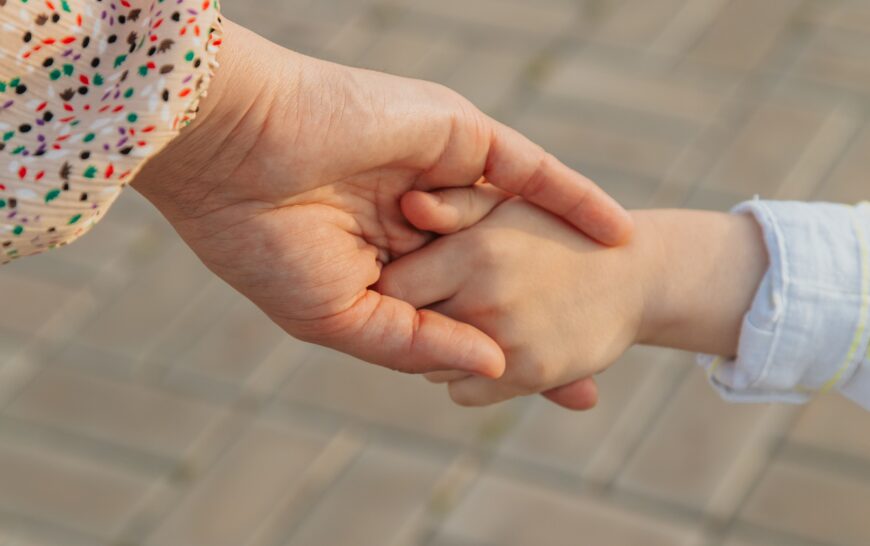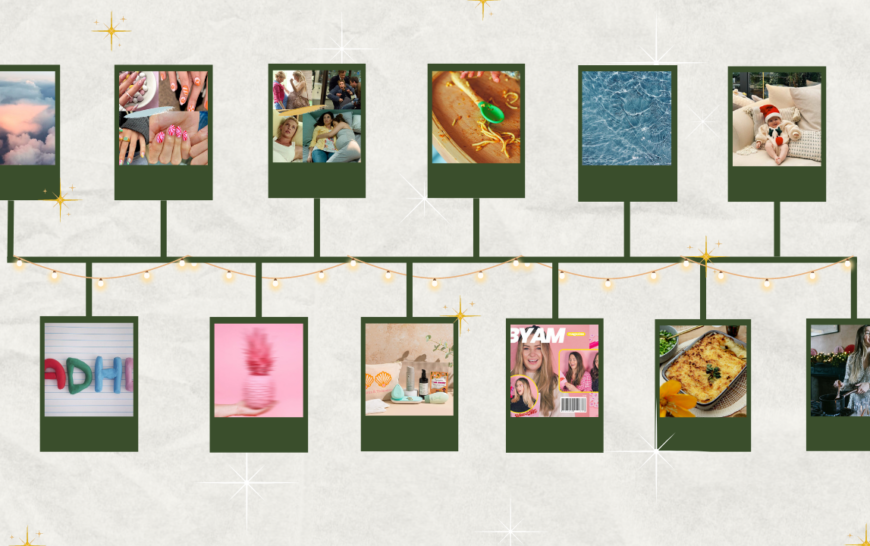
How to Connect with Your Inner Child to Heal, Evolve & Blossom in Adulthood
Everyone has an inner child but not everyone knows how to engage with them. The first step in the process of self-discovery is to acknowledge them, embracing their existence with self-compassion and allowing them to take up space in your adult life.

We’re all familiar with the phrase ‘do the work’ when it comes to the practice of self-love but how many of us have considered our inner child within the framework of healing?
Everyone has an inner child but not everyone knows how to engage with them. The first step in the process of self-discovery is to acknowledge them, embracing their existence with self-compassion and allowing them to take up space in your adult life.
Through mindfully accepting this part of ourselves, we can begin to understand which negative belief systems stem from our childhood and cause us to react the way we do to certain people or situations.
We spoke to Doctify-reviewed Dr Venetia Leonidaki, Consultant Psychologist and Founder of Spiral Psychology, to find out how to let our inner child come to light in order to reclaim our childhood, reshape our reality and live a fuller, happier adult life.
Exploring the “inner child” & why it’s important to us in adult life
Everyone has an inner child but many of us subconsciously sever the connections when we transition into adults. When our needs aren’t met as a child, the inner child becomes wounded and the resulting patterns of behaviour can impact our self-esteem in adult-life, leading to unfulfilling personal relationships or the development of self-destructive life patterns.
Dr Venetia Leonidaki explains, “The inner child describes an emotional state or a way of being, which is a remnant of the child that we once were. It is about the part of us that feels vulnerable, easily gets hurt or angry, acts impulsively but also has the capacity to experience pure joy and be spontaneous, playful, and innocent. As all adults have been children, we all carry a child part within us but how well connected each of us feels with their inner child varies enormously.”
Connecting to your inner child allows you to explore the part of your personality that both reacts and feels like a child. Things that happen when you’re younger can leave a mark on the psyche. Healing your inner child focuses on uncovering and releasing the causes for the childlike aspects of your personality, so you can react to future challenges in your adult life as an adult, rather than a wounded child.
“The concept of an “inner child” helps us recognise more fully our emotional needs, which could otherwise easily be dismissed as irrational and foolish. As children, we all have the same core needs for safety, love, validation, autonomy, spontaneity, and respect of boundaries.
“In adulthood, we continue to have these same needs, which, if they remain unmet for a long time, could lead to a range of mental health difficulties. Learning to listen to our inner child, find ways to nurture it, and meet these core needs as much as possible will give us the best chance to enjoy a sense of contentment and fulfilment in life. Ignoring or being blind to our inner child could result in a sense of neglect or disconnection or our impulses taking over control, leading to self-destructive behaviours,” says Dr Venetia Leonidaki.
No one’s going back for that inner child. Except you.
Tanya Markul
Why we lose touch with our inner child
As we grow up, we lose touch with our inner child’s needs, pains, hopes and dreams, often neglecting who they are to fit society’s version of who we have to be. When we are little, we are not concerned with what is real and what’s not, reality and make-believe run into one another like carefree watercolours. Then one day, we play for the last time. We neglect our inner child in order to make room for our adult lives and the various expectations we need to meet to be accepted.
Dr Venetia Leonidaki says, “From early on in life, we need to strike a balance between the emotional needs that we feel inside and the demands made or restrictions imposed by other people around us. Our parents, teachers, and later on our partners, employers, children require from us to show a responsible attitude, control our emotions, be rational, and conform to societal norms. As we constantly have to negotiate our internal needs with external pressures, we often end up suppressing and cutting off from our inner child.
“Our desire to please other people and our fear that we will lose their love if we don’t also result in neglecting our inner child. Neurobiology plays a role, too. Changes in certain areas of the brain, such as the prefrontal cortex, lead to new levels of sophistication in our thinking, which make us better prepared to regulate emotions and impulses. Our most sophisticated, grown-up, thinking capacity could make us rely less on raw emotions, which our inner child is mostly in touch with, driving us away from the childlike part of ourselves.”

5 ways to connect with your inner child
If you’re ready to embrace your inner child, here’s five ways you can open your heart to that part of yourself with compassion and kindness.
1. Be creative. Engaging in any artistic activity or game requires us to apply our imagination, loosen our defences, and tap into our emotions. You could try anything from artwork to playing pantomime or singing karaoke. Creative tasks unlock our childlike qualities, including being spontaneous, playful, inventive, and having fun.
2. Contact with children. Spending quality time with children, including your children, will give you a first-hand experience of a carefree but also highly emotional state of being. It could also make it easier for you to recollect memories and feelings from your own childhood.
3. Falling in love. This is not something that we can plan of course, but when we are in love, we will find ourselves experiencing a range of emotions that may be similar to what we experienced as children. Our increased need for affection and closeness, a sense of jealousy, separation anxiety are all examples of emotional states that we feel intensely when we are in love and have strong links to our childhood.
4. Tap into childhood memories. We could simply close our eyes and allow our mind to take us to childhood memories, which can be recollected more vividly when we focus on small details or sensory elements. What did we look like? Any smells that we can recollect? Going back to look at old photos, re-discover childhood toys, or revisit places that we used to go as children can also help with this task.
5. See a therapist. Having a therapist to guide us through this process can be extremely helpful. A therapist can help by pointing out any subtle or buried emotions that may belong to this part of yourself. Some therapists also use experiential techniques to bring your inner child to the surface. Chairwork, where you are asked to sit in a chair representing your child self and talk from the child’s perspective is an example of such a technique.
May we raise the bar for how we live our lives. May we ridiculously increase the amount of peace, creativity, play, beauty, love and joy in everything we do. May we all slip from the wisdom of our suffering. And awaken to the courage to share our stories that can heal and free our inner and outer worlds
Tanya Markul
The benefits of inner-child work
Though taking a deep dive into the past and how you felt as a child isn’t always comfortable work, it can provide a new depth of self-awareness and understanding, meaning adult-you can access a new level of self-compassion for the role that child played in who you are today. It can also teach you to reframe your way of thinking, putting enough distance between your inner child and who you are now.
Once you’re able to identify where certain emotions or “life-traps” stem from, you can begin to heal the inner child, in turn healing your whole adult self too. Your inner child can also lend you great strength in your adult life, unearthing forgotten parts of yourself and regaining a sense of playfulness, creativity, optimism and the joy of simple things.
Connecting with your inner child can put you in touch with a wider range of emotions, boost your creativity, enhance your desire to have fun, and help you feel more light-hearted. Dr Venetia Leonidaki.
“Connecting with your inner child can put you in touch with a wider range of emotions, boost your creativity, enhance your desire to have fun, and help you feel more light-hearted. It can also reduce feelings of emotional numbness and disconnection and make you more aware of suppressed negative emotions, which could have made you more prone to mental health difficulties. If there are any wounds from your childhood that need healing, reconnecting with your inner child could give you the opportunity to work through them. Finally, you could end up with a more complete sense of who you are by connecting different parts of yourself together,” says Dr Venetia Leonidaki.
Healing your inner child when trauma is present
For anyone with unresolved trauma or difficult childhood memories, the thought of revisiting their inner child can be triggering. It might even feel counterproductive to revisit past events but, as Dr Venetia Leonidaki explains, with the guidance of a therapist, acknowledging that vulnerable person instead of ignoring them can help process painful deep-rooted emotions, meeting the needs of your inner child and giving them an opportunity to be seen, heard and loved. Working to heal your inner child cultivates self-worth, allowing you to express these repressed emotions in a healthy way.
Helping their inner child get his/her needs met, perhaps for the first time in their lives, and taking responsibility to care and nurture the little boy or girl inside them will also form part of the healing process.Dr Venetia Leonidaki
“People with a history of childhood trauma often experience high levels of shame towards their inner child and develop coping mechanisms aiming to keep it at bay. A first step towards healing is bypassing such mechanisms and reconnecting with their inner child. This includes reconnecting with feelings of fear, sadness, loneliness, and abandonment, often found in people with a history of trauma. As this is a challenging and painful process, professional help may be crucial in helping people with trauma acknowledge their vulnerable inner child. Cultivating compassion within themselves can also help them reduce the strength of their inner critic, which could easily turn nasty, dismissing or humiliating their inner child in an internal dialogue. Helping their inner child get his/her needs met, perhaps for the first time in their lives, and taking responsibility to care and nurture the little boy or girl inside them will also form part of the healing process.
“If you experienced childhood emotional neglect for example, you may have to work extra hard as an adult in order to recognise how you feel inside and express it to others in order to satisfy any unmet needs for emotional connection and validation. Thus, practising any life skills that you may have not had the chance to develop fully early on in life makes it more likely for you to get your inner child’s unique needs met.”
7 signs your inner child could need healing
1. Recurrent traumatic memories of childhood experiences that made you feel highly anxious, ashamed, or neglected.
2. An absence of childhood memories of feeling loved, looked after, and cared for.
3. Current difficulties with anxiety or depression.
4. Addictive behaviours.
5. Relationship difficulties that prevent you from enjoying harmonious relationships or finding a trustworthy romantic partner.
6. Trying very hard to please other people and finding it almost impossible to say no
7. A strong drive to achieve constantly to prevent feeling empty or unworthy.

Types of therapy
Whether it’s issues of abandonment, low self-esteem, mistrust and abuse, social exclusion, or dependence, identifying how these negative life patterns play out every day can help you break them down, empowering you to move forward with your adult life, validate your needs and begin nurturing your inner child.
“Traces of the inner child concept can be found in various forms of psychotherapy engaging with childhood experiences. A contemporary therapy that explicitly uses inner child work as a cornerstone of the therapeutic process is schema therapy. All healthy adults can go in and out of different models, according to schema theory. Modes refer to states of mind, versions of oneself, which get activated at different times. Switching between modes is like changing gears. The child mode is one of the most important modes to consider clinically in schema therapy,” says Dr Venetia Leonidaki.
Core tasks of the therapeutic work in schema therapy include how to:
1. connect better with our child mode.
2. help the child mode get their core emotional needs met, including the need for safety and love.
3. stop any inner critics from putting down or bullying our child mode.
“Schema therapy was originally designed for individuals suffering with a personality disorder. However, it has been found useful for a range of difficulties, including anxiety, depression, trauma, childhood adversity, relationship difficulties and substance use. Schema therapy is particularly useful for clients dealing with unhelpful long-standing patterns, called life-traps in schema language. Anyone who would like to feel better connected with themselves and integrate better the different aspects of self could benefit from schema therapy.”




